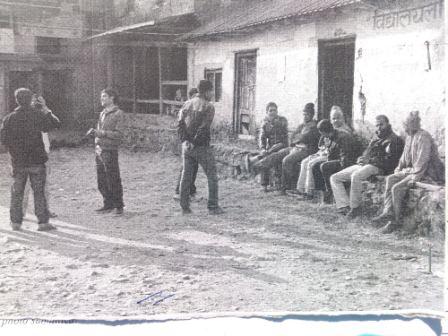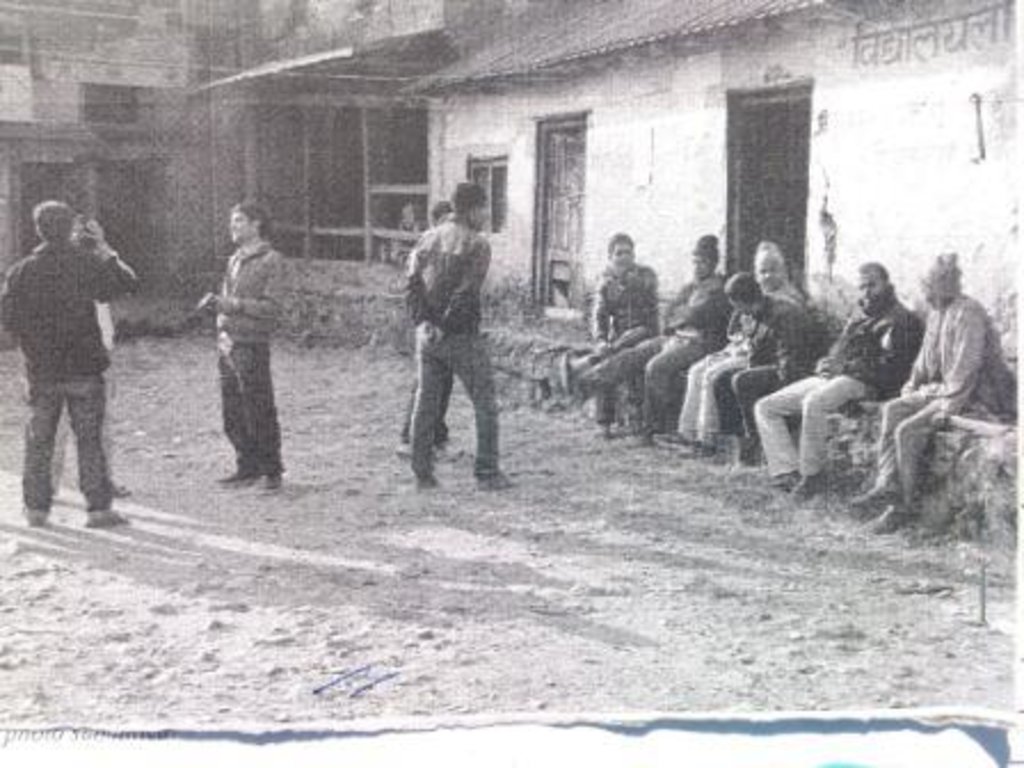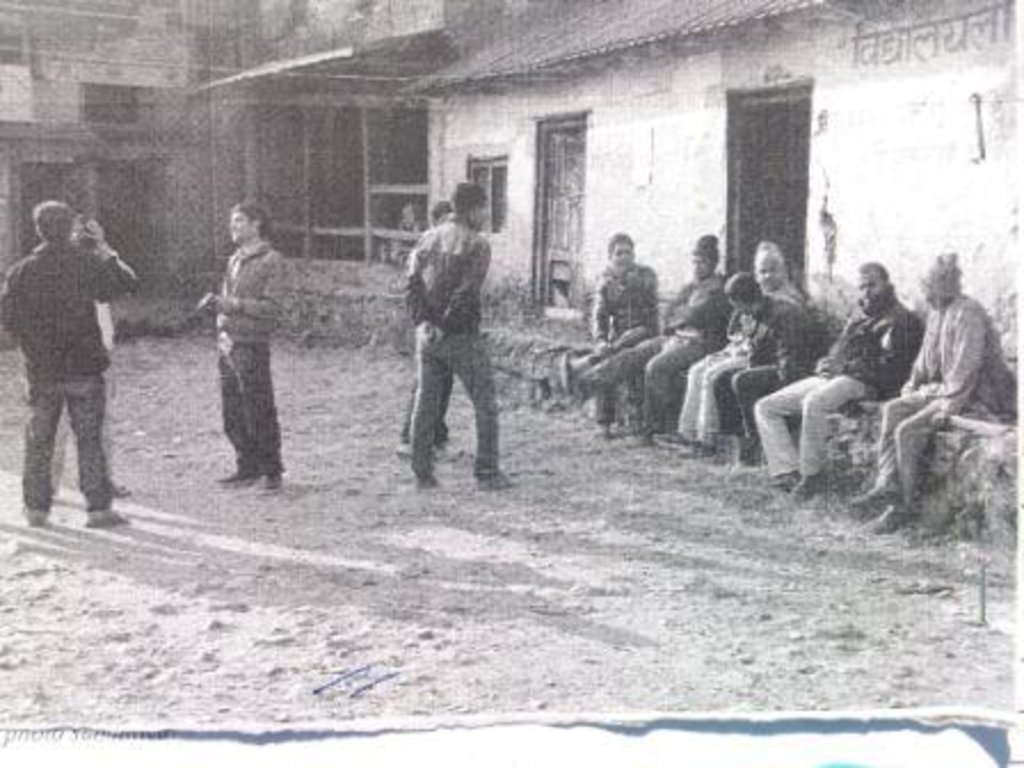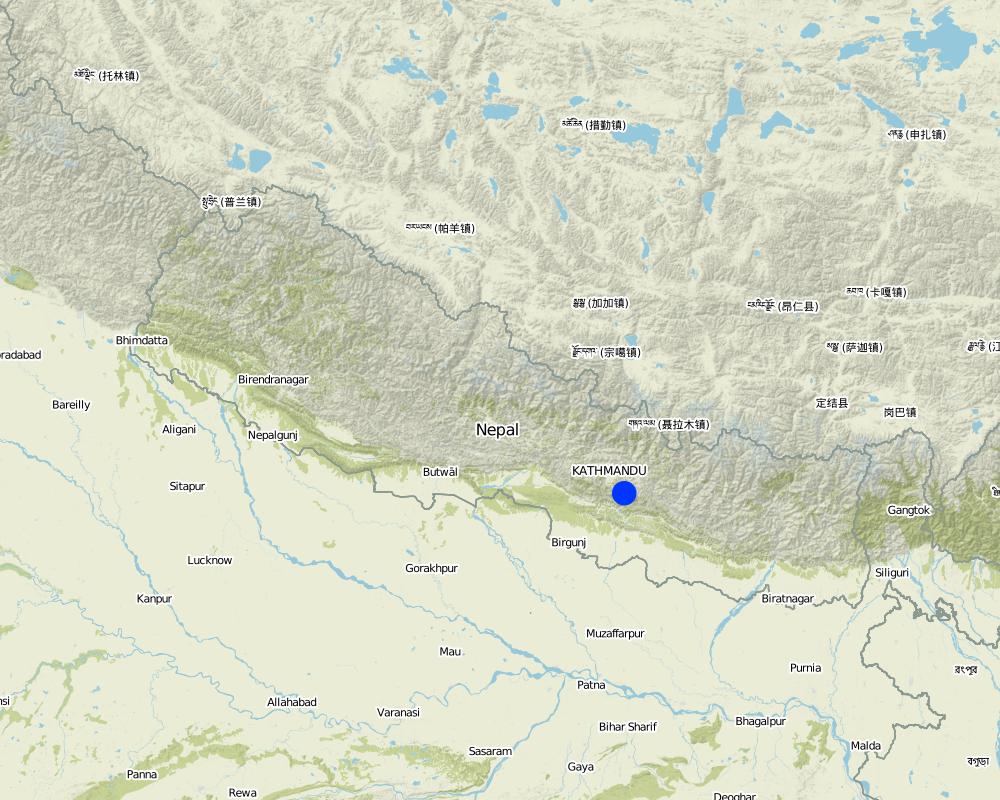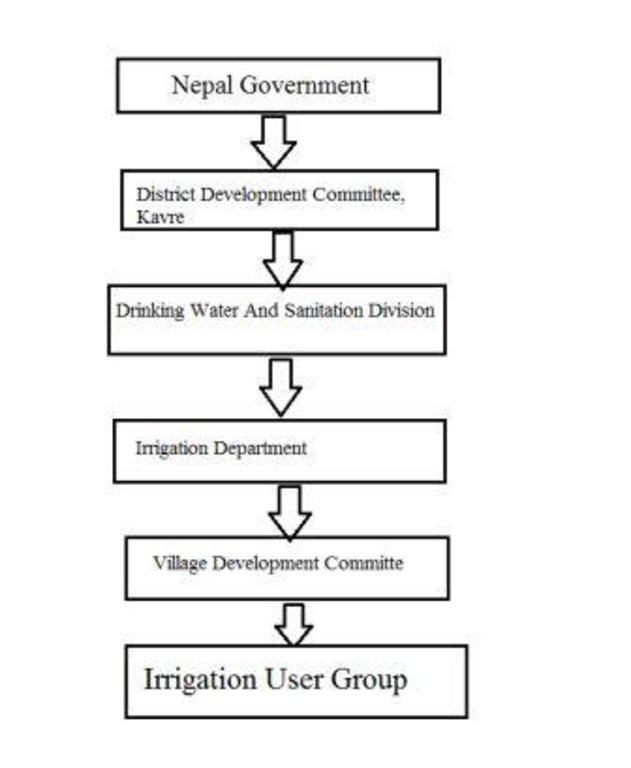Pipeline Irrigation [Непал]
- Создание:
- Обновить:
- Составитель: Sabita Aryal
- Редактор: –
- Рецензент: Fabian Ottiger
Pipe Sinchai
approaches_2636 - Непал
Просмотреть разделы
Развернуть все Свернуть все1. Общая информация
1.2 Контактные данные специалистов и организаций, участвующих в описании и оценке Подхода
Специалист по УЗП:
Singtan Gangaraj
Chyamrangbesi-2 kavrepalanchowk
Непал
Специалист по УЗП:
Bajracharya Bisweta
bisarm73@gmail.com
Kathmandu University
Dhulikhel
Непал
Название организации (-ий), содействовавших документированию/оценке Подхода (если применимо)
Kathmandu University (KU) - Непал1.3 Условия, регламентирующие использование собранных ВОКАТ данных
Когда были собраны данные (на местах)?
02/01/2013
Составитель и ответственный/-ые специалист(-ы) согласны с условиями, регламентирующими использование собранных ВОКАТ данных:
Да
1.4 Ссылка (-и) на Анкету (-ы) по Технологиям УЗП
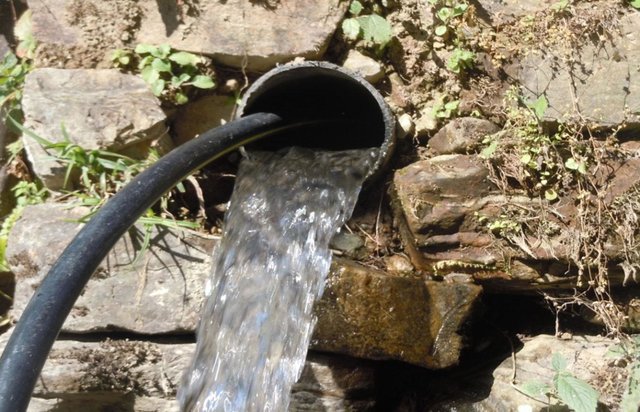
Pipe Irrigation [Непал]
Waterways and pipelines to draw water from closeby rivers for irrigation and household purposes.
- Составитель: Sabita Aryal
2. Описание Подхода УЗП
2.1 Краткое описание Подхода
The process and measures taken to draw water from nearby rivers for irrigation and household purposes.
2.2 Подробное описание Подхода
Подробное описание Подхода:
Aims / objectives: This approach was carried out to overcome the problem of less agricultural yield due to dry land.
Methods: This approach was first proposed by Mr. Gangaraj Singtan and later on a committee was formed. This committee further carried on the work through interactions.
Stages of implementation: To implement this approach,they had to face financial problems.This was solved by the contribution provided by the District Development Committee.And another was collected from villagers and the work could be carried out further.
Role of stakeholders: Everyone from every ethnic group was involved in the work.However to carry on the major discussions,the committe was formed.The following people were involved on the central committee: Mr. Gangaraj Singtan, Mr. Dand Prasad Dahal, Mr. Khemraj Dahal, Mr. Suman Dahal and mr Kiran Dahal.
2.3 Фотографии, иллюстрирующие Подход
2.5 Страна/ регион/ место, где применялся Подход
Страна:
Непал
Административная единица (Район/Область):
Chyamrangbesi-2
Более точная привязка места:
kavrepalanchowk
Map
×2.6 Даты начала и окончания реализации Подхода
Год начала реализации:
2004
2.7 Тип Подхода
- недавняя местная инициатива/ инновация
2.8 Каковы цели/ задачи Подхода
The Approach focused mainly on other activities than SLM (agriculture)
Mainly the approach was carried out to reduce the problem of dry soil that had led to low agricultural production in the village.
The SLM Approach addressed the following problems: The main problem to be addressed were the low agricultural production due to soil and the lack of cash to invest for the soil management to overcome the problem.
2.9 Условия содействующие применению Технологии/ Технологий в рамках Подхода или затрудняющие его
Наличие/ доступность финансовых ресурсов и услуг
- затрудняют
The villagers could not do the full investment for the adoption of the technology.
Treatment through the SLM Approach: District office provided with 50% investment to carry on the technology.
Институциональные условия
- затрудняют
The villagers did not have any idea of this kind of irrigation.
Treatment through the SLM Approach: The trainers and advisor helped them to know about this approach.
Нормативно-правовая база (землевладение, права на земле- и водопользование)
- содействуют
The existing land ownership, land use rights / water rights greatly helped the approach implementation: The only hindrance was finance.
Объем работ, доступность рабочей силы
- затрудняют
Due to financial aid problem it was not possible to appoint labours.
Treatment through the SLM Approach: The villagers themselves worked inorder to make this possible.
3. Участие и распределение ролей заинтересованных сторон
3.1 Заинтересованные стороны, участвующие в реализации Подхода и их роли
- местные землепользователи/ местные сообщества
Every group of people be it brahmin, tamang , chhetri, etc were involved including women.
Formed a committee for the approach and implemented together. Formed a committee to work on the technology.
- местные власти
DDC provided finance for the implementation.
- Engineer, MrPadam Bahadur Singtan helped with the model
Если участвовало несколько заинтересованных сторон, назовите ведущую организацию:
Mainly, Mr. Gangaraj Singtan proposed the idea of the technology followed by discussion and interaction in the whole community.
3.2 Участие местных землепользователей/ местных сообществ на разных стадиях реализации Подхода
| Участие местных землепользователей/ местных сообществ | Перечислите участников и опишите их вовлеченность | |
|---|---|---|
| инициирование/ мотивация | самоорганизация | Mr.Gangaraj Singtan initiated the project by forming a committee and further worked in implementing it. |
| планирование | интерактивное | Planning for the project was done by interaction in the committee |
| выполнение | интерактивное | Interaction was done in the committee to implement it. |
| мониторинг/ оценка | интерактивное | land uses do it themselves in their own house and further interact in the meetings. |
| Research | интерактивное | land users with their involvement in the meetings. |
3.3 Схема реализации (если имеется)
3.4 Принятие решений по выбору Технологии/ Технологий УЗП
Укажите, кто принимал решение по выбору применяемой Технологии/ Технологий:
- исключительно землепользователи (по собственной инициативе)
Поясните:
Since, the villagers depend on agriculture for there livelihood, to overcome their problem the land users themselves took initiative followed by different procedures upto the district level.
Decisions on the method of implementing the SLM Technology were made by by land users* alone (self-initiative / bottom-up). To implement the technology,District Development Committee helped with financewhich helped the land users to carry out further process.
4. Техническая поддержка, повышение компетенций и управление знаниями
4.1 Повышение компетенций/ обучение
Проводилось ли обучение землепользователей/ других заинтересованных лиц?
Нет
4.2 Консультационные услуги
Есть ли у землепользователей возможность получать консультации?
Да
- By Mr.Padam Bahadur Singtan
Описание/ комментарий:
Name of method used for advisory service: Technical advice by Mr.Padam Bahadur Singtan; Key elements: regarding the size of the pipe, Route of the irrigation pipe; The advice was effective as no problem has been accounted so far.
Advisory service is quite adequate to ensure the continuation of land conservation activities; The villagers seem to have idea of the process to be followed further.
4.3 Институциональная (организационная) поддержка
В ходе реализации Подхода были ли организованы новые институциональные структуры или поддержаны уже существующие?
- нет
4.4 Мониторинг и оценка
Являются ли мониторинг и оценка частью Подхода?
Да
Комментарии:
no. of land users involved aspects were regular monitored by land users through observations; indicators: allocation of project activities
management of Approach aspects were ad hoc monitored by land users through observations
There were no changes in the Approach as a result of monitoring and evaluation
There were no changes in the Technology as a result of monitoring and evaluation
4.5 Научные исследования
Были ли научные исследования частью Подхода?
Да
Укажите темы исследований:
- экономика / маркетинг
Напишите подробнее и назовите тех, кто выполнял исследования:
The research was entirely villagers work.
Research was carried out on-farm
5. Финансирование и внешняя материальная поддержка
5.1 Годовой бюджет мероприятий по УЗП в рамках Подхода
Если точный годовой бюжет неизвестен, укажите примерный диапазон затрат:
- 2000-10000
Комментарий (например, основные источники финансирования/ ключевые доноры):
Approach costs were met by the following donors: local government (district, county, municipality, village etc) (District Development Committtee , Village Development Committee): 50.0%; local community / land user(s) (A committee formed for the project): 50.0%
5.2 Финансирование и внешняя материальная поддержка, предоставляемая землепользователям
Предоставлялась ли землепользователям финансовая/ материальная поддержка для применения Технологии /Технологий?
Да
5.3 Субсидии на отдельные затраты (включая оплату труда)
- оборудование
| Укажите, какие ресурсы были субсидированы | В какой степени | Опишите субсидии подробнее |
|---|---|---|
| Cement and pipe | профинансированы частично | |
Если труд землепользователя был существенным вкладом, укажите, был ли этот вклад:
- добровольный
Комментарии:
For the benefit of their land, land users were involved.
The equipment was owned by the land users themselves and for cement and pipes, partly contribution was made by DDC.
5.4 Кредитование
Предоставлялись ли в рамках Подхода кредиты на мероприятия УЗП?
Нет
6. Анализ влияния и заключительные положения
6.1 Влияние Подхода
Сумел ли Подход помочь землепользователям внедрить и поддерживать технологии УЗП?
- Нет
- Да, немного
- Да, умеренно
- Да, существенно
The runoff of upper soil due to erosion was prevented because of the flow of water through pipe and in fields, more yeild has been noticed.
Сумел ли Подход расширить возможности социально и экономически уязвимых групп?
- Нет
- Да, немного
- Да, умеренно
- Да, существенно
All the ethnic group were benefitted as their livelihood improved in different ways.
Did other land users / projects adopt the Approach?
- Нет
- Да, немного
- Да, умеренно
- Да, существенно
ward no.9 of the same VDC
Did the Approach lead to improved livelihoods / human well-being?
- Нет
- Да, немного
- Да, умеренно
- Да, существенно
Increased yield led to increased incomne so the land users were able to improve their settlement, build good homes, got school fees for their children.
Did the Approach help to alleviate poverty?
- Нет
- Да, немного
- Да, умеренно
- Да, существенно
The income from the yeild helped greatly to improve their way of living, education and better health.
6.2 Основные причины, побуждающие землепользователей внедрять УЗП
- рост продуктивности
for better cultivation.
- рост прибыли (доходности) и рентабельности
better yield leads to better economic condition
- снижение объёма работ
no load to carry water from distance
- причастность к движению/ проекту/ группе/ сети
to prevent dry soil and upper soil loss.
6.3 Долгосрочная устойчивость мероприятий в рамках Подхода
Могут ли землепользователи самостоятельно (без внешней поддержки) продолжать применение того, что было реализовано в рамках Подхода?
- да
Если да, опишите как:
They have the idea of the procedures to carry out. Regarding finance also they have been collecting Rs.30 from each month and so far have collected 13000. So, they may not have problem in finance as well.
6.4 Сильные стороны/ преимущества Подхода
| Сильные стороны/ преимущества/ возможности по мнению землепользователей |
|---|
| Greenery (How to sustain/ enhance this strength: This can be sustained by awareness to the people about consequences of dry soil and poor use of water.) |
| Better livelihood. |
| Сильные стороны/ преимущества/ возможности по мнению составителя или других ключевых специалистов |
|---|
|
Increased yeild led to increased income and hence better economic condition. (How to sustain/ enhance this strength: Proper use of water.) |
| The committee formed led to united work. (How to sustain/ enhance this strength: Participation of all people without discrimination.) |
6.5 Слабые стороны/ недостатки Подхода и пути их преодоления
| Слабые стороны/ недостатки/ риски по мнению землепользователей | Возможные пути их преодоления/снижения? |
|---|---|
| Large amout may lead to water wastage. | People must be encouraged to make proper use or go for alternative use. |
| Слабые стороны/ недостатки/ риски по мнению составителя или ответственных специалистов | Возможные пути их преодоления/снижения? |
|---|---|
| Sometimes the water may get wasted if it is not required in the field. | The water when not required may be used for other purposes or may just simply drain in other route where it is required. |
| Sometimes the amount of water required by the crops may exceed due o which the crops may die. |
7. Справочные материалы и ссылки
7.1 Методы сбора/источники информации
- выезды на места, полевые обследования
- опросы землепользователей
Ссылки и модули
Развернуть все Свернуть всеСсылки

Pipe Irrigation [Непал]
Waterways and pipelines to draw water from closeby rivers for irrigation and household purposes.
- Составитель: Sabita Aryal
Модули
Нет модулей


